Hidden Patterns
Those of you who follow my blog know that I love exhibitions and visit as many as possible. For me this is a way of learning and also a way of spreading information and knowledge when I post about it. I have a pretty good visual memory, can recall what I see for a long time and posting about it is like a recap as I need to go through the information and revisit each photo I take.
This week I went to an exhibition, that was maybe the most unusual I've seen so far. Not because I did not like it, but because of what the exhibition was about. The title of the exhibition was "Barabási LAB - Hidden Patterns". The title itself reveals that it was an unusual one and you'll see for yourself if I'm right to call it unusual or not.
Before I go on, let me ask you a question. How do you illustrate data? How would you present data to be visualized by the public? Well, there are ways to do that and this exhibition will show you how.
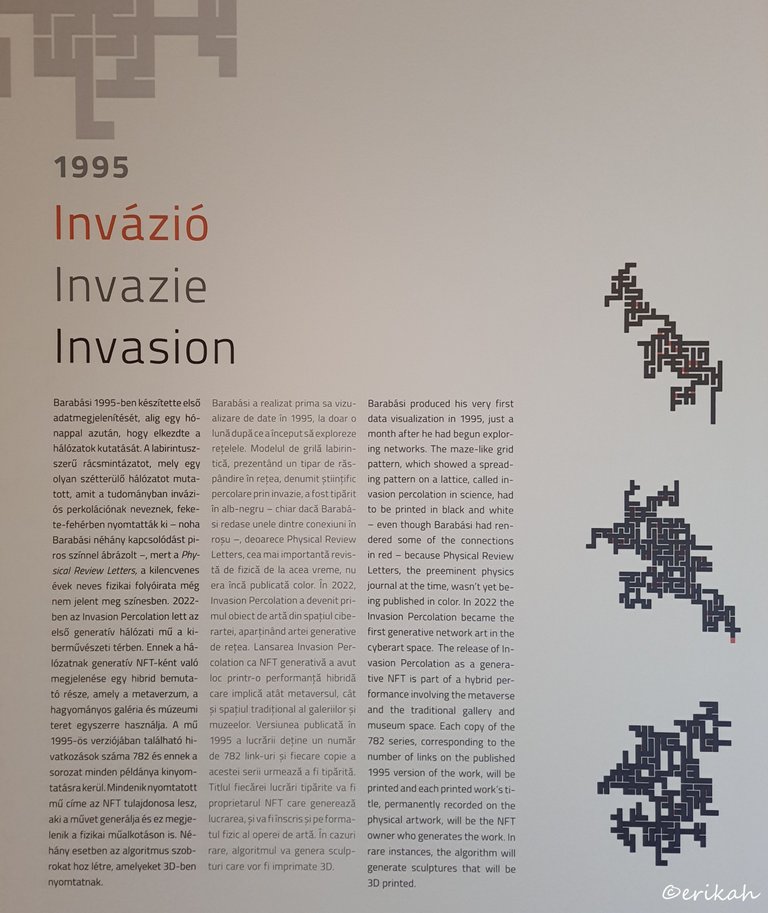
The BarabasiLab, also known as The Center for Complex Network Research at Northeastern University, has changed the way the world understands networks. For 25 years, under the leadership of Albert-László Barabási, the Lab has been developing the visual vocabulary of complexity based on the team’s pioneering research into a broad range of topics, from protein interactions to success in the art world. Their 2-D visualizations, 3-D data sculptures, and virtual reality environments have made complex scientific concepts approachable and relatable, offering a window into how the many systems that govern our world actually function. From the first simplistic diagrams to today’s elaborate aesthetic creations, the Lab’s visualization work has evolved into an expressive language that creates a new relationship between art and science. source
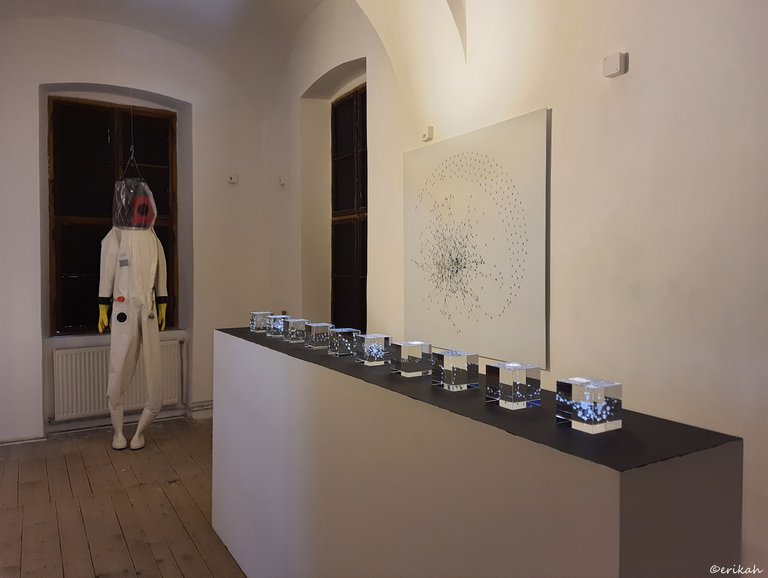
This was the first thing I saw when I stepped into the first room. The suit and the helmet immediately indicated protection and you'll see why that was needed.
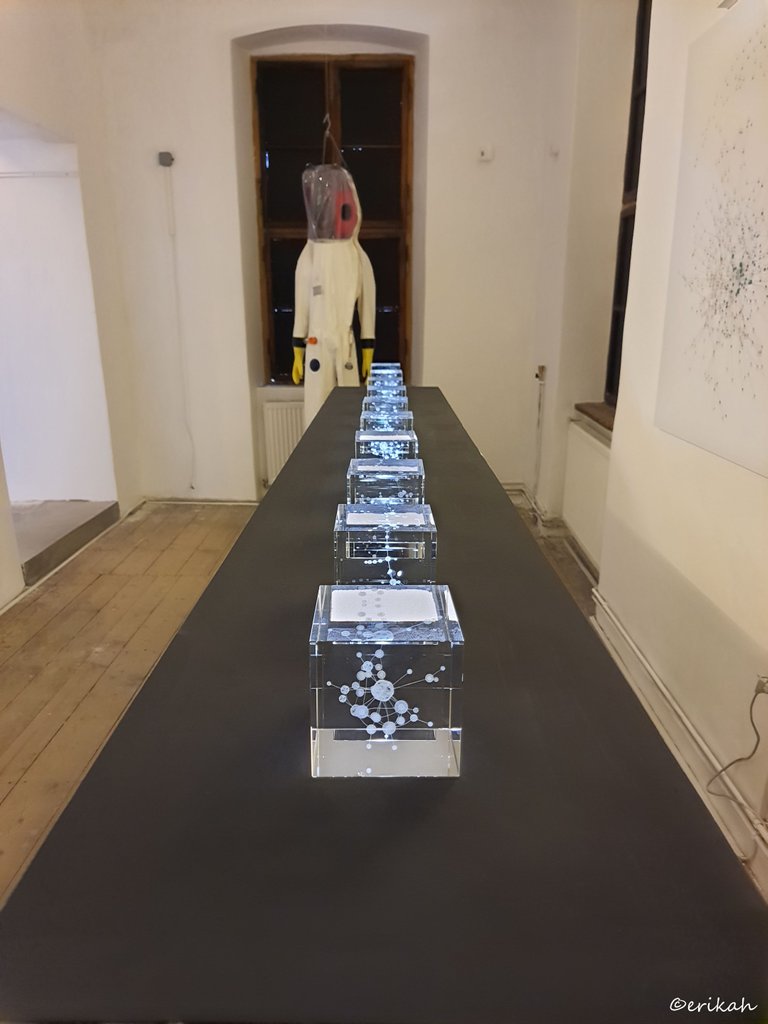
These cubes and what was inside them kind of let me believe the exhibition has something to do with chemistry.
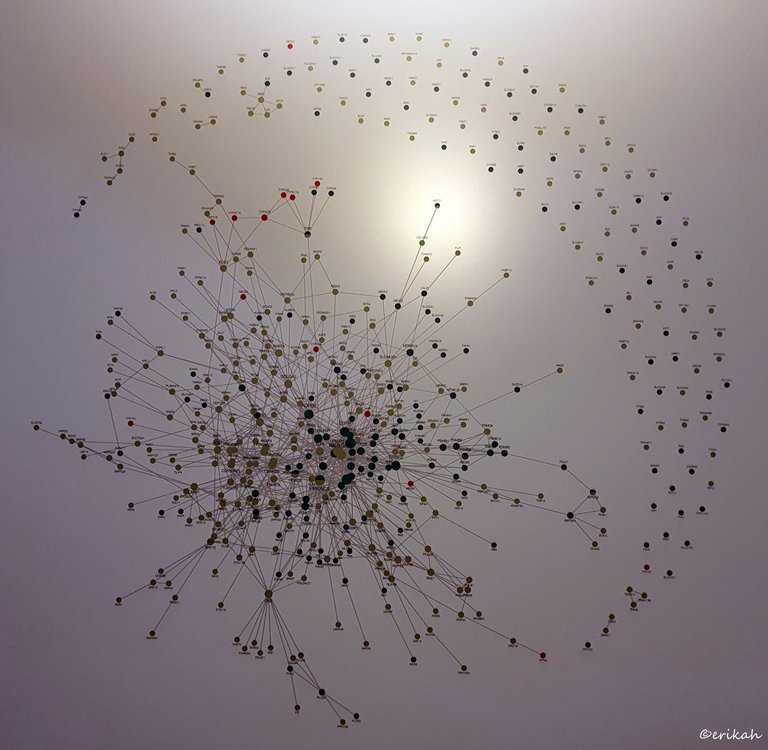
This looked like a network.
Albert-László Barabási is a network scientist, fascinated with a wide range of topics, from unveiling the structure of the brain to treating diseases using network medicine, from the emergence of success in art to how does science really works. His work has helped unveil the hidden order behind various complex systems using the quantitative tools of network science, a research field that he pioneered, and lead to the discovery of scale-free networks, helping explain the emergence of many natural, technological and social networks.
Albert-László Barabási spends most of his time in Boston, where is the Robert Gray Dodge Professor of Network Science at Northeastern University, and holds an appointment in the Department of Medicine at Harvard Medical School. But he splits his time with Budapest, where he runs an European Research Council project at Central European University. A Hungarian born native of Transylvania, Romania, he received his Masters in Theoretical Physics at the Eötvös University in Budapest, Hungary and Ph.D. three years later at Boston University. source
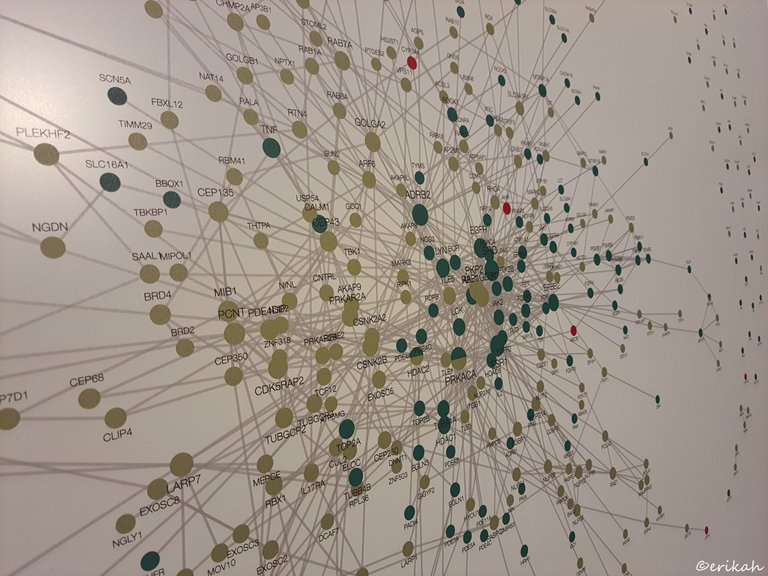
Looks like a network and most likely is a network, but looks all Chinese to me, so I Googled one of the codes I saw there and turns out GOLGA2 is a Protein Coding gene, BBOX1 is another Protein Coding gene, so based on this, I assume the rest are also Protein Coding genes.
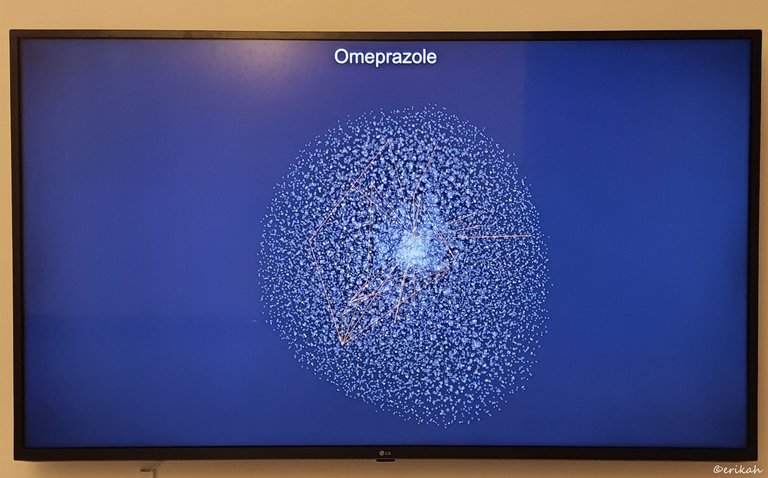
While I was looking at that network, trying to figure out what it is, a strange sound was coming from the next room. Strange and scary as well. It started like a very loud breathing, which was strange (yes, the keyword of the day is "strange") as no one breathes that loud. Then the sound slowly started to fade away. Then after a few seconds, the loud breathing started again.

The next room looked even more interesting.
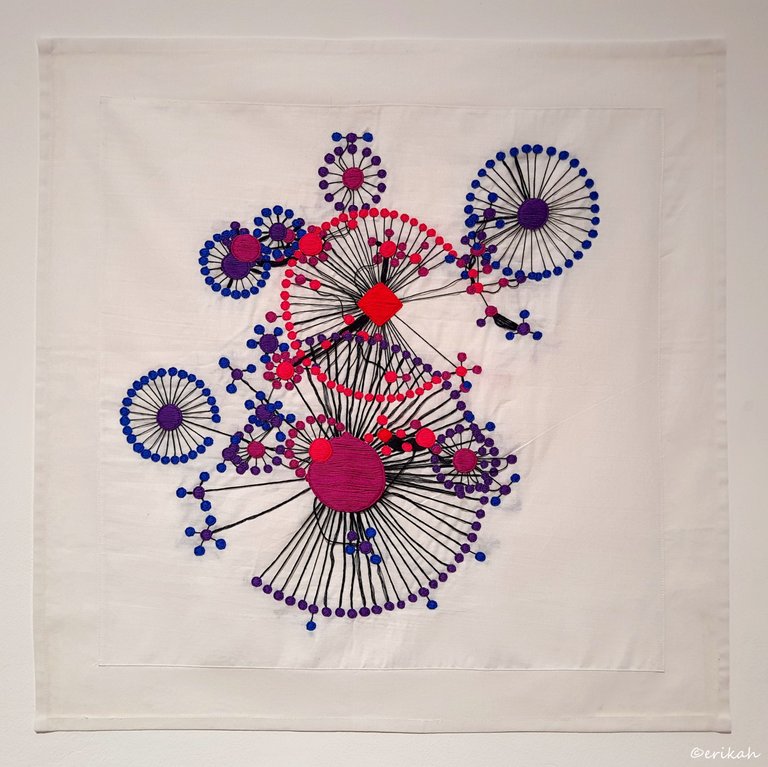
What do you see here? I suppose the answer depends on how you look at it. If I have no idea where this piece of embroidery is, I may think it's just embroidery. But it's not.
It's the network of stress.

And here you have the explanation. Read it carefully and do an exercise. Forget the embroidered canvas you saw above, read the text and try to imagine how you would illustrate the events or the data coming from what is is described above :) A tough one for sure.
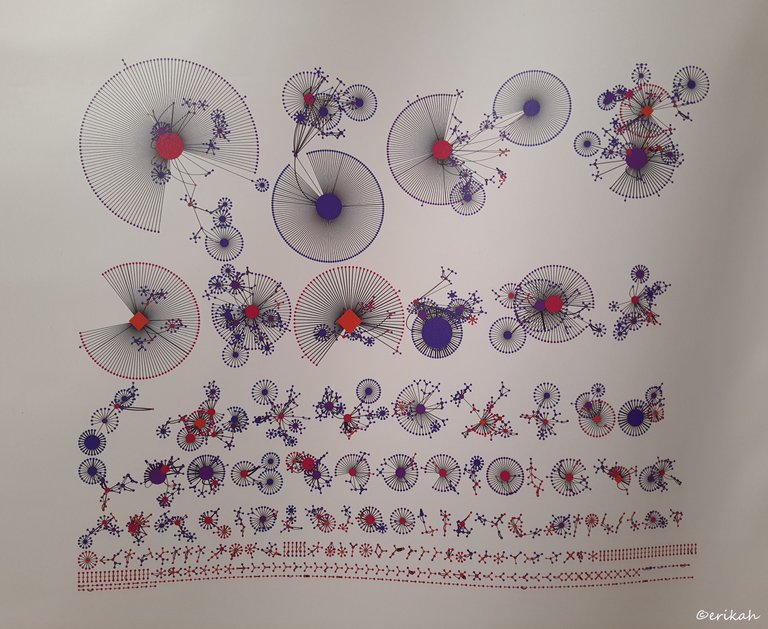
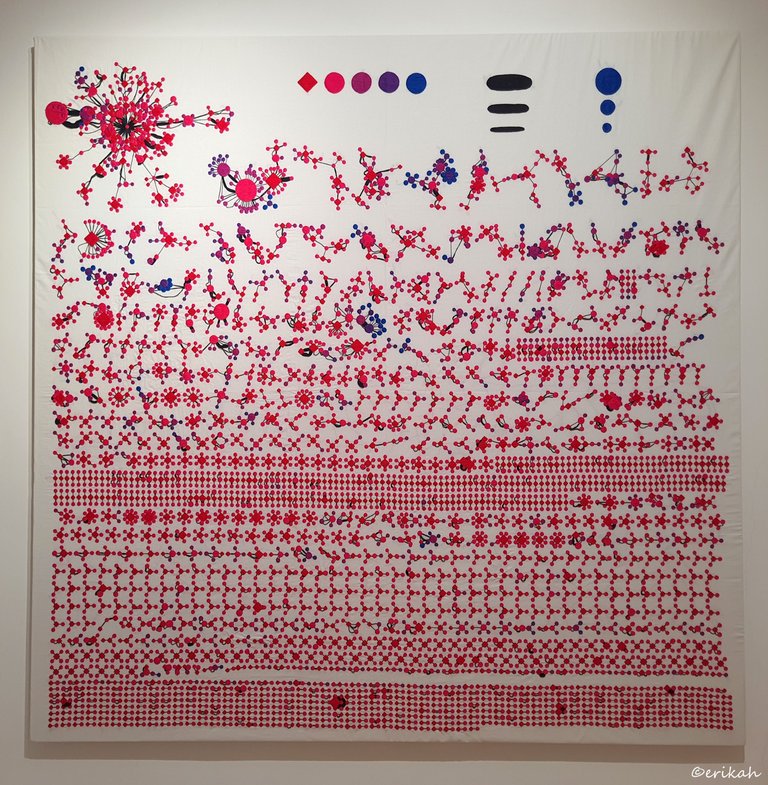
This was another embroidered canvas, a huge one.
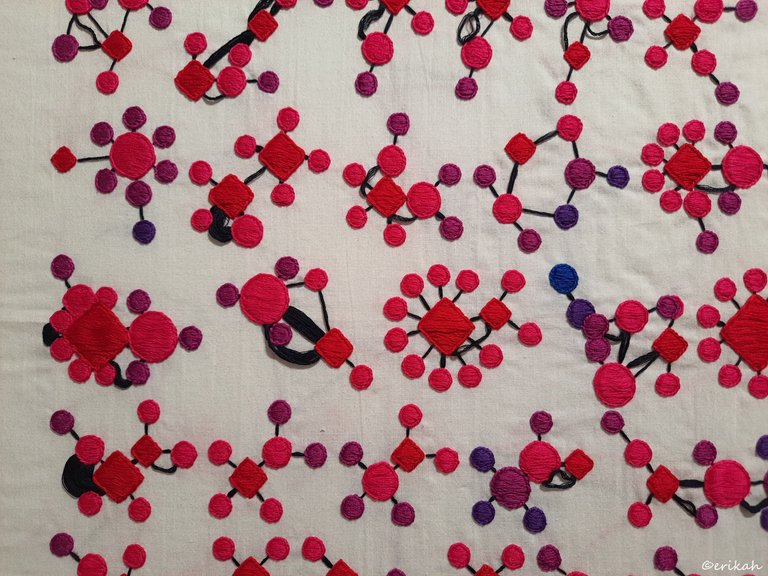
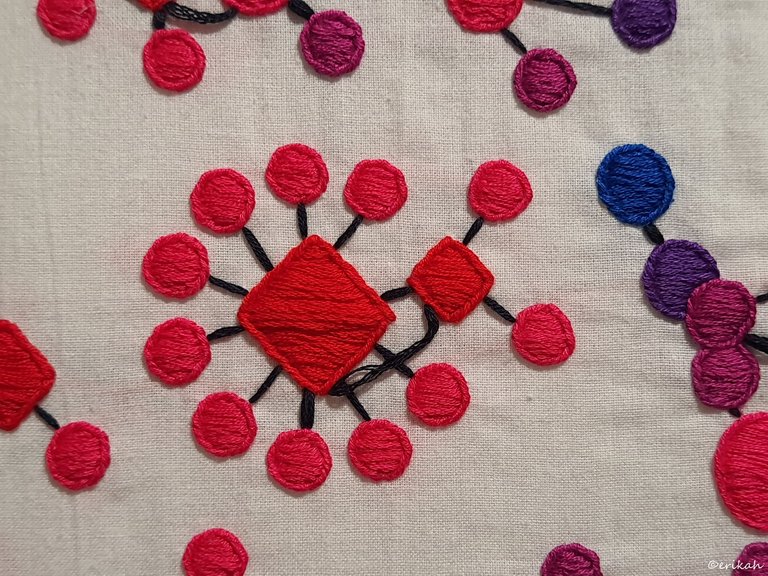

I took a close-up photo of this one too, so you can see how it's done. I tried to figure out if it's been done manually or not, but I think it is manual embroidery. Or not :)
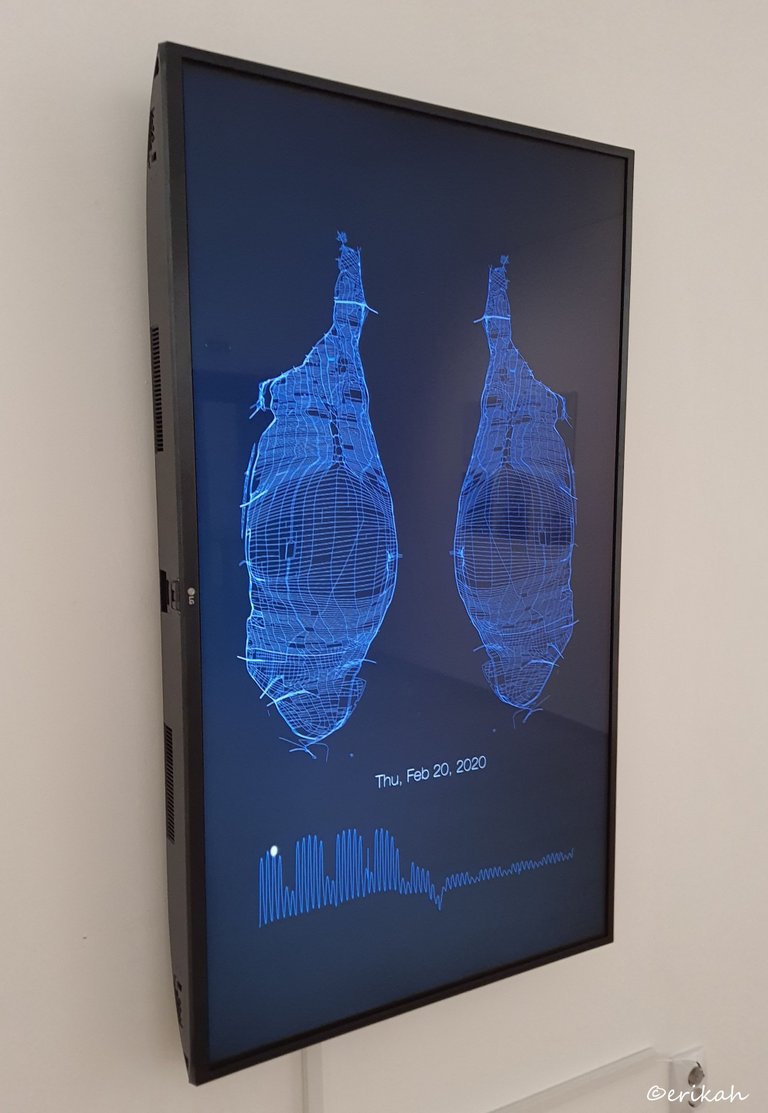
On the next wall there was this screen, playing a video illustrating how the human lungs work, when affected by Covid-19. This is where that strange breathing sound came from.
The video monitors the human lungs' activity for about two months, period in which the lungs shrunk in size, breathing deteriorated dramatically and I suppose at the end of the period the activity line goes flat.
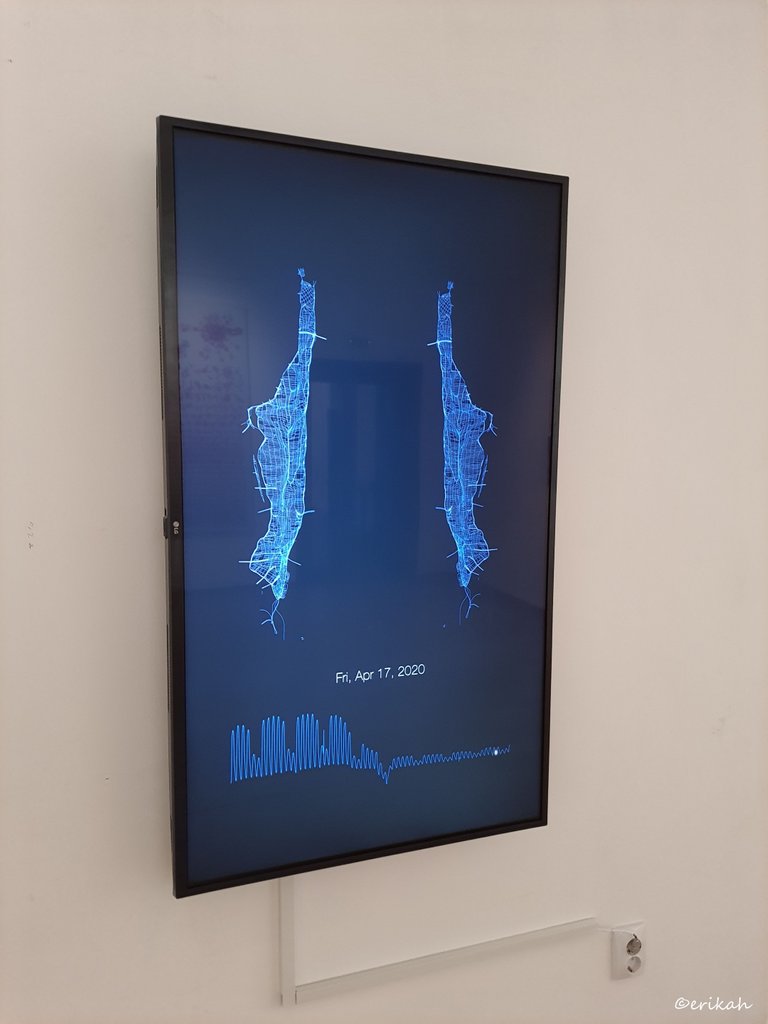
This is the image of the lungs towards the end of the period. You can see the size of them are almost half of the original. At come point, the line goes below the normal, so I suppose that means respiratory arrest, but I'm not a doctor, so this is just guessing. It is extremely sad to see such thing happen (I mean pulmonary activity decreasing), but from scientific point of view the illustration is fascinating.
This would be my explanation, without knowing what it represents.
Now look at the explanation it was given by the scientists.
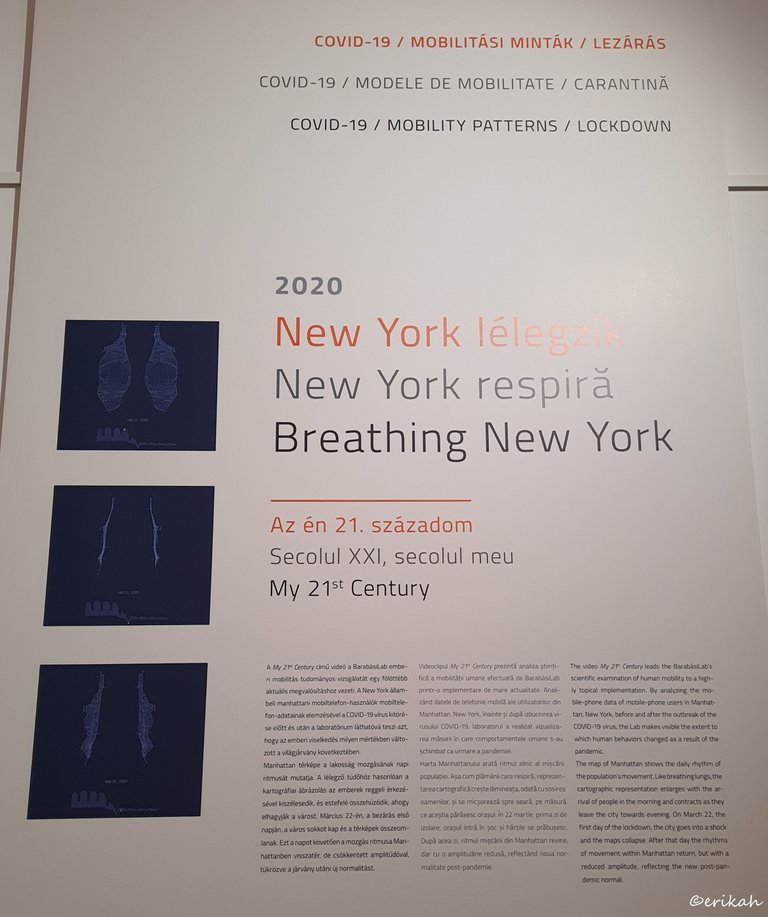
The whole video was about how New York was breathing 😂
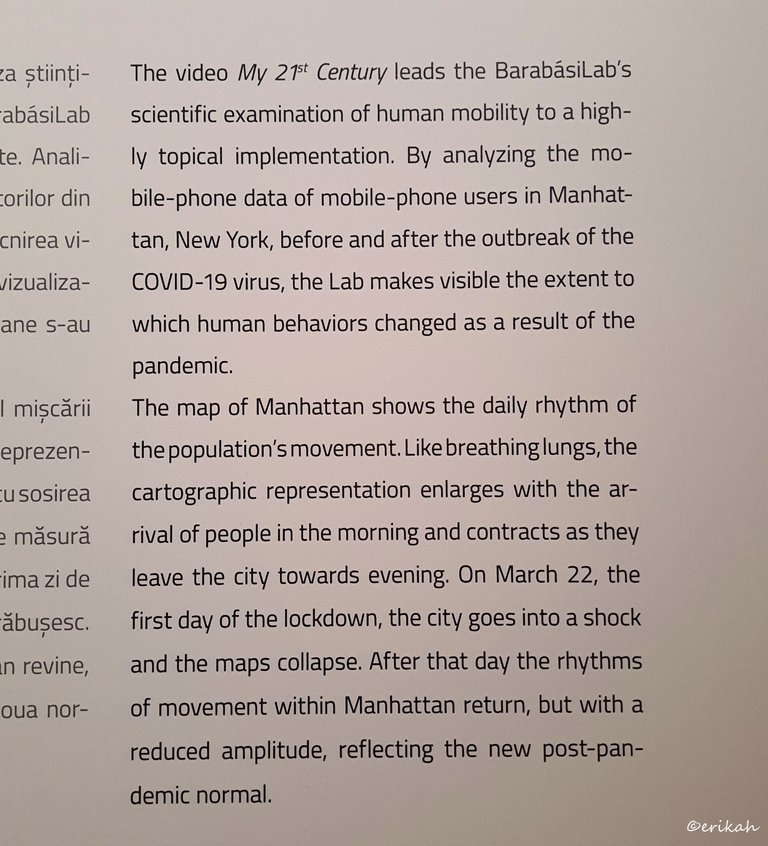
Oh boy, was I wrong about this? Big time!
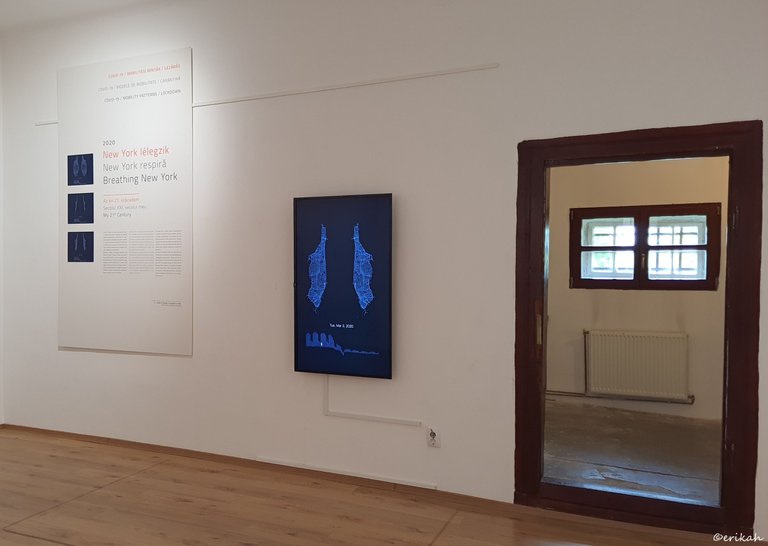
This was just a part of the exhibition, so stay tuned as more interesting things are coming soon.
In conclusion, even though it seemed strange at the beginning, I'm glad I visited the exhibition as this is a whole new universe. I'm used to illustrating data as my work is all about data, but this is a whole different level and I like it.

If you're a newbie, you may want to check out these guides:
- Communities Explained - Newbie Guide
- Cross Posting And Reposting Explained, Using PeakD
- Hive Is Not For Me
- How To Pump Your Reputation Fast - Newbie Guide
- Tips And Tricks & Useful Hive Tools For Newbies
- More Useful Tools On Hive - Newbie Guide
- Community List And Why It Is Important To Post In The Right Community
- Witnesses And Proposals Explained - Newbie Guide
- To Stake, Or Not To Stake - Newbie Guide
- Tags And Tagging - Newbie Guide
- Newbie Expectations And Reality

Network in first picture looks more good than others. It's a good exhibition where they give you little information too about all the stuff
Totally agree with you on this!!They really are something different!!
Yes and different things attracted the most
Without information, there's no way one can understand what's going on.
Yes you're right
What a spectacular exhibition!!Some of these pieces are really something. Waiting for the next part of your this experience...Also,I have some exciting stuff coming up on blog this month. Follow me for some amazing travel stories.
Next parts will be even more interesting. Coming next week.
Hahaha
It looks Chinese to the both of us
This seem to be hard for me
https://leofinance.io/threads/view/peniel2010/re-leothreads-3b7i1axht
The rewards earned on this comment will go directly to the people ( peniel2010 ) sharing the post on LeoThreads,LikeTu,dBuzz.
I really like the image designed like a bicycle 🚳. It really look very very nice.
The closer looks of the embroidery on the canvas is very much interesting. It looks like patterns of the different constellation.
I understand what you mean by unusual exhibition because it does look very unique and would never thought of something like this. But thanks for opening my eyes and making me aware of more outstanding things when it comes to patterns and exhibitions:)
I think we're not alone with this. And the sad part is that not many can see it as interesting or see the value in it.
When i bought the ticket, asked the lady what can I see today. She told me the title of the exhibition, but enthusiasm was lacking and saw no joy on her face. However, if you look at it from a different perspective, from the creator's point of view, i think you see my point :)
This is something I’ve never seen in my life, I’m intrigued!
Thanks for sharing.
$WINE
Congratulations, @theguruasia You Successfully Shared 0.800 WINEX With @erikah.
You Earned 0.800 WINEX As Curation Reward.
You Utilized 4/4 Successful Calls.
Contact Us : WINEX Token Discord Channel
WINEX Current Market Price : 0.094
Swap Your Hive <=> Swap.Hive With Industry Lowest Fee (0.1%) : Click This Link
Read Latest Updates Or Contact Us
This exhibition can be very important for visitors as well as for Science Students. Complex networks are not so easy to understand. Our DNA also has a complex network with wide diversity. Moreover, protein structures with their coding gene are also tough to apprehend. I appreciate the efforts of the lab team, they provided visual information to tourists with their network system about COVID and different Codes. Omeprazole is medicine, I think..